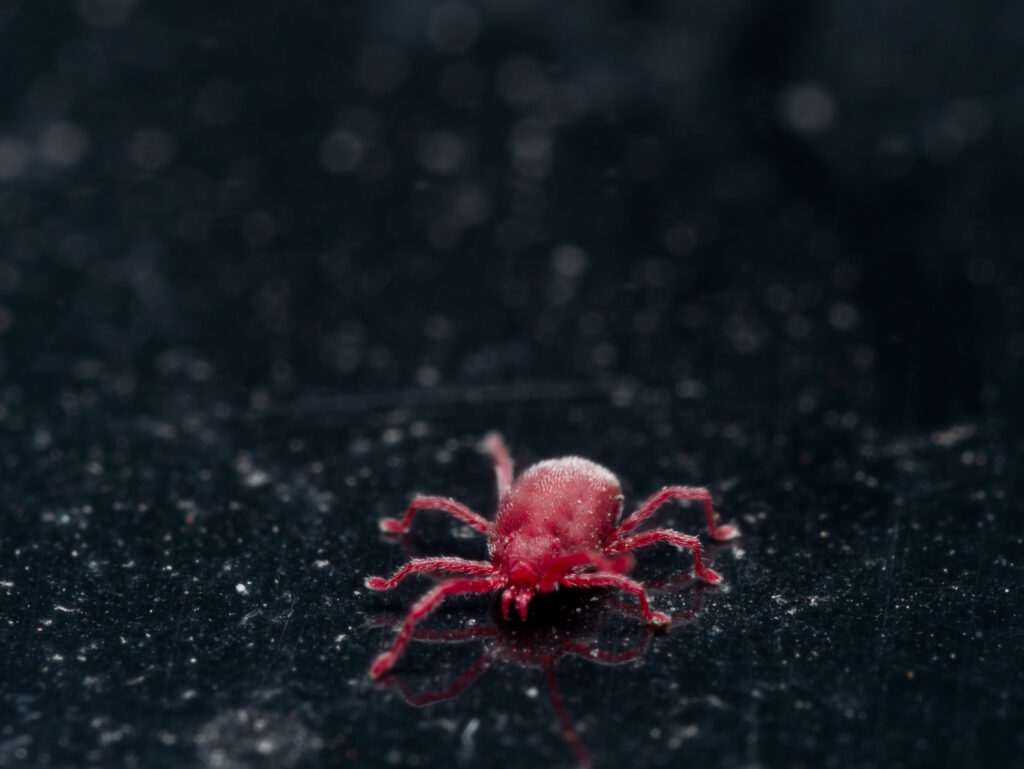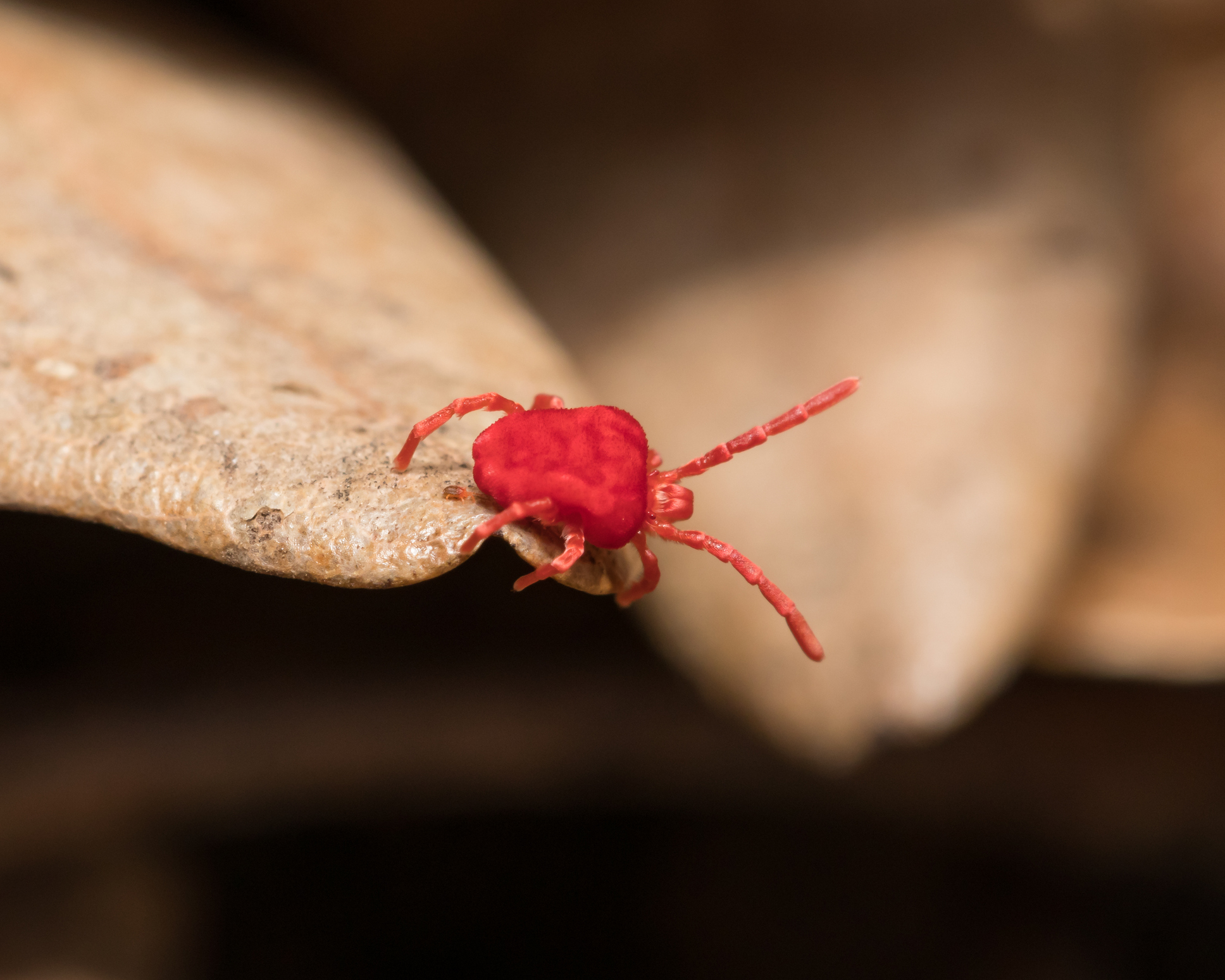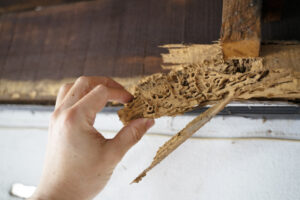Clover Mites: Small, Red & Ready to Invade
If you’ve ever seen tiny reddish-brown dots crawling along your windowsills or walls—especially on sunny spring days—chances are you’ve met the clover mite. These little guys are more nuisance than threat, but they can show up en masse, which makes them quite the springtime headache. Here are some surprising and fun facts about clover mites… and what we can do to stop them.

Clover Mites Aren’t Insects
Technically, clover mites are part of the arachnid class, which includes spiders, ticks, and scorpions. Unlike insects (which have six legs), clover mites have eight legs, and their front pair is extra long, often extending forward and giving the appearance of antennae. Their reddish color and small size—roughly smaller than a pinhead—makes them easy to miss until you spot them en masse.
They Love Sunny, Warm Walls
Clover mites thrive in sun-exposed environments and are especially drawn to heat-reflective surfaces like brick, stucco, and concrete. That’s why you’ll usually see them on the south and west sides of homes where sunlight hits strongest. They’ll crawl up walls in search of warmth and shelter—then accidentally find themselves inside through gaps and cracks.
They Multiply Fast—Like, Really Fast
One of the most surprising things about clover mites is their ability to reproduce without mating—a process known as parthenogenesis. Each female lays up to 70 eggs, often tucked into cracks in siding, foundation walls, or concrete patios. When environmental conditions are just right—cool and moist—the eggs hatch in large numbers, resulting in a sudden surge of visible mites around your property.
Clover Mites Don’t Bite or Sting
If there’s any good news, it’s that they are completely non-aggressive. They don’t bite, sting, or transmit disease, and they won’t infest food or furniture. However, when squashed, they release red body pigments that can stain walls, curtains, or upholstery, especially around window ledges and baseboards where they often gather.
They Feed on Lawns, Not Homes
Clover mites feed exclusively on plant material—including grasses, clover, dandelions, and other low-lying vegetation. In particular, they thrive in over-fertilized, thick lawns that grow right up to the home’s foundation. Their presence is actually a sign of healthy landscaping—but too much lush growth around the home gives them easy access to crawl onto your structure.
They Sneak In Through the Tiniest Gaps
Due to their microscopic size—as small as 0.5 mm—clover mites can slip through window screens, door frames, utility penetrations, and hairline foundation cracks. Many homes built with vinyl or brick siding have natural expansion joints that are big enough to serve as superhighways for these tiny intruders. Once inside, they tend to wander toward windows due to the light.
DIY Sprays Usually Miss the Mark
Most hardware store bug sprays aren’t well suited for clover mites. Many only work on direct contact, while clover mites are usually hiding in cracks or crawling on vertical surfaces. Worse, some sprays break down quickly in sunlight or can cause visible staining on brick, stucco, and paint. Overuse can also drive the mites deeper into wall voids, making the problem worse.
They Disappear by Early Summer
Clover mites are cool-weather pests, most active during spring and fall when temperatures stay between 45°F and 75°F. Once summer heat kicks in and temperatures exceed 85°F, they go dormant—hiding in cracks, behind siding, or under mulch. But without preventative action, they’ll reappear in force come autumn, repeating the cycle.
Vacuum—Don’t Squish
Spotting mites indoors? Skip the tissues. Squishing clover mites often leads to red stains that are hard to clean. The best method is to gently vacuum them up using a hose attachment, then immediately remove and discard the vacuum bag. Some professionals also use lint rollers or sticky traps near window sills to detect and monitor mite activity.
How Pest Control Services Help Manage Clover Mites
Managing clover mites is a seasonal battle best fought with a combination of environmental changes and professional-grade treatments. Here’s how a pest control service (like ours!) tackles it:
Perimeter Barrier Applications
Using a residual insecticide, we create a long-lasting barrier around the foundation, window frames, and exterior walls. This helps prevent mites from ever crossing into the home.Lawn Edge Treatments
Targeted spraying of the first 2–4 feet of grass or mulch around the home—especially on sunny exposures—reduces clover mite nesting zones and discourages movement toward the house.Crack & Gap Sealing Support
We help identify common entry points, including siding joints and basement windows, and recommend caulking or foam sealants to physically block access.Quarterly Pest Control Program
Since clover mites are most active in spring and fall, we recommend a quarterly treatment schedule to maintain the barrier and inspect for signs of re-infestation. This also helps manage other seasonal pests like ants and spiders


